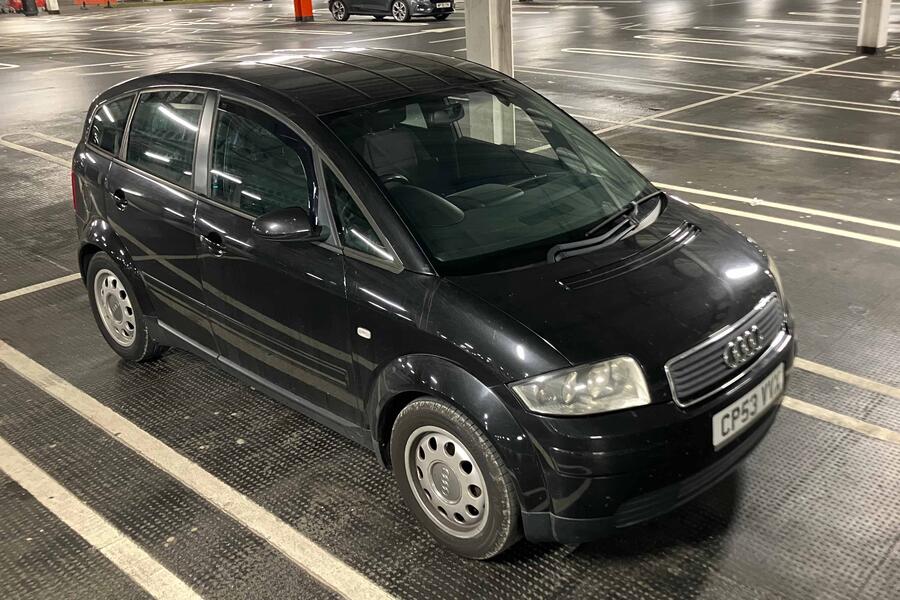Aerodynamists' jobs are becoming ever more important. We should have listened to them sooner
I've fitted a new set of wheels and tyres to my Audi A2, smaller ones than before, and improved its fuel consumption notably.
"I reckon it would be pushing 80mpg behind a lorry at 55mph," said a colleague when I told him how the trip computer readout (measuring over the duration I've owned the car) had climbed from a steady 68.8mpg to 71.8mpg and rising since the new hardware was fitted. I think that's a considerable underestimate.
Since making the wheel swap, I had put the difference down to narrower and more efficient tyres, plus the fact the new wheels were lighter. Then I read some quotes from a man with an ever more important job. Moni Islam, Audi's head of aerodynamics and aeroacoustics, recently told Autocar: "The A2 pushed the boundaries of car design with its proportions based on the work of [famous 20th-century car designer and aerodynamicist] Wunibald Kamm, and its optimised underbody and wheels."
I had so concerned myself with width, which affects the car's frontal area (which you multiply by the drag coefficient to find overall aerodynamic drag), and the friction of the tyre itself that I hadn't considered the aerodynamic effects of the wheel design in the improvement. I've gone from nine thick, sharp-edged wheel spokes to basically a disc with 10 discreet holes in it, so of course each wheel will be spinning less turbulently than its predecessor.
And because the wheels are sitting more inboard the body, they're even less likely to upset airflow down the sides of (and underneath) the car.

What kind of difference do small airflow changes alone make to the economy of a car? The American TV show Mythbusters once experimented with this by seeing how running a car clean versus dirty would affect its economy. They took a typical US-market saloon and got it as filthy as they could, measured its economy, then gave it a sensationally good clean and tried again.
As with most practical experiments, if you tried you could pick a hole here or there in the method, but I think it stood up pretty rigorously. The filthy car returned 24mpg at a steady 65mph; the clean car returned 26.4mpg. So if you've ever cleaned your car and thought it felt faster or more responsive afterwards but dismissed this as placebo effect, don't be so sure.
You had just removed weight from and improved the aerodynamics of four rotating masses, perhaps reducing their inertia notably. Mythbusters' versions of clean and dirty were extremes, but I will bet the human mind can detect smaller back-to-back changes.
Audi, it's worth saying, has long had form working on aerodynamics. Its C3-generation 100 of 1982, which had its efficiency figure proudly etched into its rear quarterlights ("Cd 0.30"), set new standards in the big saloon class. "Rivals' combinations of performance and economy are suddenly made to look pathetic by this unsupercharged 2.2-litre," we wrote when we tested it.

The effect of aerodynamics increases as speed rises, so rivals that matched the 100's acceleration to 50mph were trailing it by half a second to 60mph and each took nearly four seconds longer than it to reach 100mph. But the benefit in daily driving was that this five-cylinder petrol saloon would do 38.2mpg if driven gently.
I mentioned aerodynamicists' jobs becoming ever more important because, while some car makers haven't worried too much about it with combustion-engined cars, they can't afford to ignore it with electric ones.
You can improve an ICE car's economy considerably with good aerodynamic efficiency, but most of the energy in its fuel will still become heat and noise rather than forward motion.
An EV has far fewer heat and noise losses, so much more of the energy you put in it becomes motion. The proportional effect of making it slipperier, then, is much greater: the same aerodynamic improvements will garner a bigger improvement in overall efficiency. And that's important, because an EV with poor aerodynamic efficiency doesn't just cost money but also, if it has lower refuelling speeds, costs time. And there's nothing more valuable than time.



